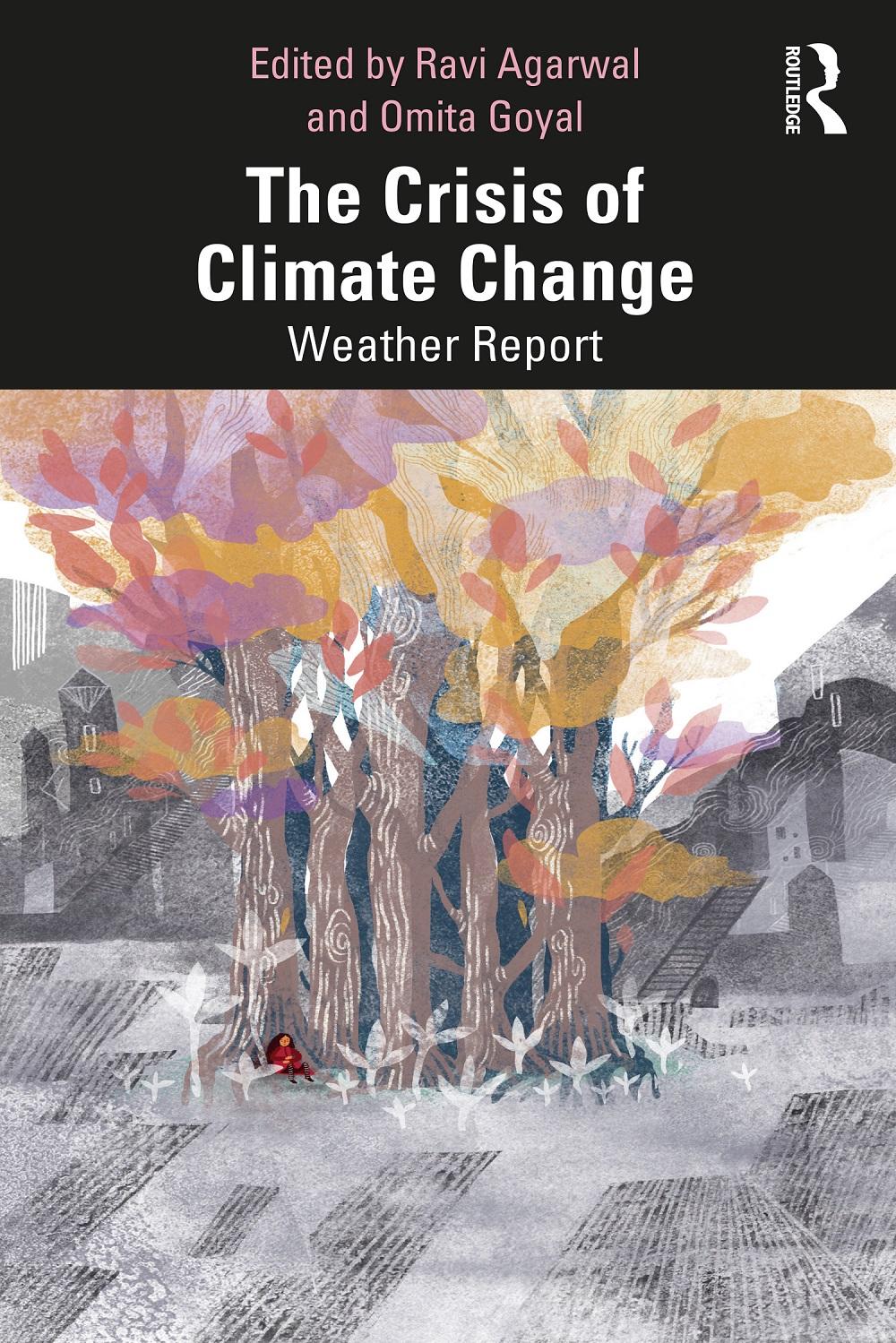Animal Behaviour and Cognition
Over the course of the year 2020-21, Animal Behaviour and Cognition Programme members worked on various projects funded by national (DST, ISRO) and international (ERC) organisations. The major focus was to investigate drivers of human-primate conflicts, the impact of land use changes on human primate co-existence, object recognition and tool manufacture on wild bonnet macaques and behavioural ecology of lion-tailed macaques. Studies related to the urban ecologies of wild and feral species in Delhi and Guwahati, interactions between Asian elephants and human communities in southern India, the determinants of social decision making in a megafish Deccan Mahseer, people’s perceptions of endangered fishes and costs of human food choices were also carried out.
| Sindhu Radhakrishna Professor and Head School: School of Natural Sciences and Engineering Programme: Animal Behaviour and Cognition Room no: S 23 +91-080-2218 5115 sindhu.radhakrishna@gmail.com |
Professor
Post-Doctoral Associate
PhD Scholar

Doctoral Student
Doctoral Student
Post-Doctoral Associate

Doctoral Student
Professor
Doctoral Student
Associate Professor
Post-Doctoral Associate
| Primate Behaviourial Ecology Research studies in this area include population dynamics of lion-tailed macaques in the western ghats, intraspecific variation in the slender loris, the cognitive bases of object manipulation and tool manufacture by wild bonnet macaques, food object recognition by bonnet macaques, decision- making during crop-raiding by rhesus macaques, and mitigation techniques to address macaque crop-raiding behaviour. |
| Ethnoprimatology Projects that fall under subdisciplinary rubric address all aspects pertaining to the human-primate interface. Some of the more recent studies include exploring the representation of monkeys in regional literature, cultural and religious views of macaques, perceptions of people vis-à-vis problem primates, role of land use patterns in shaping human primate con flict and factors the drive the initiation and escalation of human-primate conflict. |
| Human-Elephant Interactions The studies on human- elephant relations focus on how elephants survive and persist in fragmented, in southern and northeastern India by adopting novel behaviourial strategies. |
| Piscine Behaviour and Conservation Projects under this theme cover topics such as behaviour of subterranean fishes, impact of anthropogenic activities on the survival status of indigenous fish, management of invasive fishes, and social decision making in megafishes. |
| Urban Ecologies These set of studies focus on a range of wild, feral and cultivated species in the Indian cities of Delhi and Guwahati and provides insights into what urbanisation might entail for these other than-human species. More specifically, the studies explore how etho-geographical understandings can potentially contribute to our understanding of the political ecologies of urbanization, .and its implications for urban design and development policies. |
| Other Research Other studies undertaken by Programme members include projects on the ecological costs of human food choices in India, cross-cultural musical exchanges in colonial India, sense making of warning messages broadcasted during cyclones, and the impact of COVID on science communication. All these studies are essentially cross-disciplinary in nature and involve collaborators from various disciplinary backgrounds from both within the institute and outside. |

|
Sayan Banerjee PhD Scholar, Animal Behaviour and Cognition Programme Book Review: A fraught tale of the Mishmis, their tigers and the world beyond https://science.thewire.in/environment/book-review-tigers-are-our-brothers-mishmi-tigers-world-beyond/ The Wire Science This is a book review of Tigers Are Our Brothers: Anthropology of Wildlife Conservation in Northeast India, authored by Dr. Ambika Aiyadurai. The review discusses the key themes and takeaways from the book. |
| |
Anindya Sinha co-authored Professor, Animal Behaviour and Cognition Programme The Rurban elephant: Behavioural ecology of Asian elephants in response to large-scale landuse change in a human-dominated landscape in peri-urban southern India https://link.springer.com/chapter/10.1007/978-981-16-3738-4_16 New Forms of Urban Agriculture: An Urban Ecology Perspective (Eds. Diehl J A and Kaur H). Springer Nature, Singapore, March 2022 pp. 289-310 In this chapter, we assess the impacts of such transformations on the lives of India’s largest land mammal, the Asian elephant and discuss the adaptations displayed by this species to human-induced change, with a particular focus on how the successful exploitation of rurban agricultural resources has allowed for the appearance of spatially and temporally flexible behavioural innovations that, in turn, have impacted the life-history strategies of a threatened elephant population in a peri-urban region of southern India |
| |
Anindya Sinha, Michael A Huffman co-authored The banj oak Quercus leucotrichophora as a potential mitigating factor for human-langur interactions in the Garhwal Himalayas, India: People’s perceptions and ecological importance. Global Ecology and Conservation 22: e00985. |
| V V Binoy co-authored Artificial intelligence (AI) and India: promise, perception and preparedness. (NIAS Research Report No. NIAS/NSE/U/RR/070/2019). |
|
| V V Binoy co-authored 'The load of diversity’: Cognitive load of lessons on biodiversity and classification in the biology textbooks of five different states of India. https://doi.org/10.31234/osf.io/k83cz PsyArxiv.com/k83cz/ |
|
| V V Binoy co-authored Smartphone geospatial Apps for dengue control, prevention, prediction and education: MOSapp, DISapp and the Mosquito Perception Index (MPI). Journal of Environment Monitoring and Assessment, Special Issue: Geospatial Tech in Environment Health Applications 191(2): 393. |
|
| Sindhu Radhakrishna co-authored Professor and Head, Animal Behaviour and Cognition Programme Janus-faced interactions: The nature of human-macaque conflicts in India. Hornbill Apr-June: 107-111. |
|
| Sindhu Radhakrishna, V V Binoy co-authored Human-Elephant conflict in Kerala, India: A rapid appraisal using compensation records. Human Ecology 48: 101-109. |
|
| Sindhu Radhakrishna co-authored Professor and Head, Animal Behaviour and Cognition Programme Reliability of macaques as seed dispersers American Journal of Primatology 82(5): e23115 |
|
| Sindhu Radhakrishna, V V Binoy co-authored To kill or not to kill?: Factors related to people’s support of lethal and non-lethal strategies for managing monkeys in India https://doi.org/10.1080/10871209.2020.1856453 Human Dimensions of Wildlife |
|
| Sindhu Radhakrishna, Paula A Pebsworth co-authored Using conditioned taste aversion to reduce human-nonhuman primate conflict: A comparison of four potentially illness-inducing drugs Applied Animal Behaviour Science 225(104948) |
|
| Sindhu Radhakrishna, Shaurabh Anand co-authored Is human–rhesus macaque (macaca mulatta) conflict in India a case of human-human conflict? Ambio 49: 1685-1696. |
|
| |
Anindya Sinha, Anmol Chowdhury co-authored Anindya Sinha is Professor; Anmol Chowdhury is Doctoral Student, Animal Behaviour and Cognition Programme Affective ethnographies of animal lives In: A Research Agenda for Animal Geographies edited by Alice Hovorka, Sandra McCubbin, Lauren Van Patter. Cheltenham: Edward Elgar Publishing, pp. 129-146. |

|
Anmol Chowdhury, Sneha Gutgutia co-authored Tharangini- The oldest surviving hand-block printing studio in Bangalore. Vikalp Sangam, 7 June 2019. |
| |
Anindya Sinha Professor, Animal Behaviour and Cognition Programme Ramesh Maheshwari (1940–2019). Current Science 117: 524-525. |
| |
Anindya Sinha co-authored Professor, Animal Behaviour and Cognition Programme An action plan for the control of commensal, non-human primates in public places Zoo’s Print 34: 1-13. |
| |
Anindya Sinha co-authored Professor, Animal Behaviour and Cognition Programme All-male groups in Asian elephants: A novel, adaptive social strategy in increasingly anthropogenic landscapes of southern India. Scientific Reports 9: 8678. |
| |
Anindya Sinha, V V Binoy co-authored Can living with an alien invasive fish, Tilapia, influence the shoaling decision-making and exploratory behaviour of an air-breathing freshwater fish, the climbing perch? https://doi.org/10.1101/839563 bioRxiv 839563. |
| |
Anindya Sinha, V V Binoy co-authored Inter-ecosystem variation in the food-collection behaviour of climbing perch Anabas testudineus, a freshwater fish. https://doi.org/10.1101/573600 bioRxiv 573600 |
| |
Anindya Sinha, Shreedhar Vijayakrishna co-authored Professor, Animal Behaviour and Cognition Programme Human-captive elephant relationships in Kerala: Historical perspectives and current scenarios. Gajah 50: 29-35. |
| |
Anindya Sinha, Maan Barua co-authored Professor, Animal Behaviour and Cognition Programme Nonhuman lifeworlds in urban India. The Philosopher 108: 22-27. |
| |
Anindya Sinha Professor, Animal Behaviour and Cognition Programme Sharing from the same bowl: Resource partitioning between sympatric macaque species in the Western Himalaya, India. International Journal of Primatology 40: 356-373. |
| |
Anindya Sinha, Shreejata Gupta co-authored Professor, Animal Behaviour and Cognition Programme Gestural communication of wild bonnet macaques in the Bandipur National Park, southern India. Behavioural Processes 168: 103956. |
| |
Anindya Sinha, Maan Barua co-authored Professor, Animal Behaviour and Cognition Programme Animating the urban: An ethological and geographical conversation. Social and Cultural Geography 20: 1160-1180. |
| |
Anindya Sinha Professor, Animal Behaviour and Cognition Programme Elephants on the move: Implications for human-elephant interaction. IIC Quarterly 46: 100-113. |
| |
Anindya Sinha, Nishant M Srinivasaiah co-authored Professor, Animal Behaviour and Cognition Programme The elephant in the city: The trialectics of space in the rurban elephants of southern India. Position Paper, Spaces of Living in Transformation—In Times of Uncertainty, Urban Environments Initiative, Rachel Carson Center, Ludwig Maximilian University, Munich, Germany |
| |
Anindya Sinha co-authored Professor, Animal Behaviour and Cognition Programme Macaca munzala. The IUCN Red List of Threatened Species 2020: e.T136569A17948833. |
| |
Anindya Sinha co-authored Professor, Animal Behaviour and Cognition Programme The banj oak Quercus leucotrichophora as a potential mitigating factor for human-langur interactions in the Garhwal Himalayas, India: People’s perceptions and ecological importance. Global Ecology and Conservation 22: e00985. |
| |
Anindya Sinha co-authored Professor, Animal Behaviour and Cognition Programme The devil is in the detail' Peer-review of the Wildlife Conservation Plan by the Wildlife Institute of India for the Etalin Hydropower Project, Dibang Valley, Zoo’s Print 35(5): 1-78. |
| |
Anindya Sinha co-authored Professor, Animal Behaviour and Cognition Programme Chronic extraction of forest resources is threatening a unique wildlife habitat of Upper Brahmaputra Valley, northeastern India Current Science 119(6): 1042-1045. |
| |
Anindya Sinha Professor, Animal Behaviour and Cognition Programme Silent words: Semiotic assemblages as bridges to the semantics-pragmatics divide in communication. In: Mind and Cognition: An Interdisciplinary Sharing. Essays in Honour of Prof Amita Chatterjee Volume 1 edited by Kuntala Bhattacharya, Madhucchanda Sen and Smita Sirker. New Delhi: D K Printworld, pp. 371-389 |
| Ashni Kumar Dhawale, Anindya Sinha, M Ananda Kumar Ashni Kumar Dhawale is PhD Scholar; Anindya Sinha is Professor, Animal Behaviour and Cognition Programme Changing ecologies, shifting behaviours: Behavioural responses of a rainforest primate, the lion-tailed macaque Macaca silenus, to a matrix of anthropogenic habitats in southern India https://journals.plos.org/plosone/article?id=10.1371/journal.pone.0238695 PLoS One, September 2020 This study highlights the importance of understanding behavioural changes displayed by animals in response to human interactions; such knowledge could be crucial for the planning and implementation of management and conservation strategies for endangered species such as the lion-tailed macaque and possibly other wildlife in the increasingly anthropogenic landscapes of the tropical world. |
|

|
Anindya Sinha co-authored Professor, Animal Behaviour and Cognition Programme Elephants on the Move: Implications for Human-Elephant Interactions https://www.taylorfrancis.com/chapters/edit/10.4324/9781003216612-10/elephants-move-nishant-srinivasaiah-srinivas-vaidyanathan-raman-sukumar-anindya-… Book chapter: The Crisis of Climate Change: Weather Report, Routledge India, New Delhi, 2021 To survive and persist in fragmented, human-dominated landscapes, especially in the Anthropocene, elephants often need to modify their behavior. In this chapter, using empirical data, the authors assess the behavioral adaptability of elephants, as determined by their innate biological variables, such as age, sex, and grouping patterns at the population level, and discuss the impacts of global climatic changes on the behavior and distribution of Asian elephants, as evidenced through their own studies. |
| |
Sindhu Radhakrishna, V V Binoy co-authored Sindhu Radhakrishna is Professor and Head; V V Binoy is Associate Professor, Animal Behaviour and Cognition Programme To kill or not to kill?: factors related to people’s support of lethal and non-lethal strategies for managing monkeys in India https://www.tandfonline.com/doi/abs/10.1080/10871209.2020.1856453?journalCode=uhdw20 Human Dimensions of Wildlife, December 2020 This study investigated factors related to people’s choice of conflict mitigation strategies against commensal monkey species in two regions in india. |
| |
V V Binoy co-authored Associate Professor, Animal Behaviour and Cognition Programme Social decision making is influenced by size of shoal but not boldness, sociability or familiarity in Deccan mahseer (Tor khudree) https://www.tandfonline.com/doi/abs/10.1080/10236244.2020.1838 Marine and Freshwater Behaviour and Physiology, November 2020 This study examines the link between shoaling decisions and behavioural traits in a hatchery reared population of an endangered megafish, the Deccan mahseer (Tor khudree). |
| |
Sindhu Radhakrishna co-authored Professor and Head, Animal Behaviour and Cognition Programme Reliability of macaques as seed dispersers https://onlinelibrary.wiley.com/doi/10.1002/ajp.23115 American Journal of Primatology, February 2020 This paper proposes a practical framework to assess the spatial reliability of frugivores as seed dispersers and posits that it is essential to maintain viable populations of macaques across their range and keep human interventions at a minimum to ensure that they continue to reliably disperse the seeds of a broad range of plant species in the Anthropocene. It further suggests that this framework be used for assessing the spatial reliability of other taxonomic groups as seed dispersers. |
| |
Sindhu Radhakrishna co-authored Professor and Head, Animal Behaviour and Cognition Programme What does human-animal studies have to offer ethology? https://link.springer.com/article/10.1007%2Fs10211-020-00349-4 Acta Ethologica, July 2020 Although animals are the primary focus of studies in human-animal studies (HAS), very few ethologists engage with this discipline. Insights from HAS can help provide a deeper and richer understanding of animal behaviour and humananimal interactions. HAS perspectives regarding animal and human spaces, the sociozoological scale theory, and the concepts of animal agency and intersubjectivity in human-animal interactions help demystify puzzling aspects of human-wildlife conflict scenarios and impel a re-examination of ethological dictums and methodologies. We argue that inputs from human-animal studies will aid in the growth of ethology. |
| |
Sindhu Radhakrishna co-authored Professor and Head, Animal Behaviour and Cognition Programme Is human–rhesus macaque (Macaca mulatta) conflict in India a case of human–human conflict? https://link.springer.com/article/10.1007%2Fs13280-020-01324-w Ambio, March 2020 The authors have studied the attitudes and perceptions of forest department personnel regarding the management of human-rhesus macaque conflict (HRMC) in Himachal Pradesh, northern India. |
| |
Sindhu Radhakrishna co-authored Professor and Head, Animal Behaviour and Cognition Programme The human–primate interface in the New Normal: Challenges and opportunities for primatologists in the COVID‐19 era and beyond https://www.ncbi.nlm.nih.gov/pmc/articles/PMC7404331/ American Journal of Primatology, August 2020 In this commentary, authors identified challenges and opportunities at human-primate interfaces in light of COVID-19, focusing on examples from Asia, and make recommendations for researchers working with wild primates to reduce zoonosis risk and leverage research opportunities. |
| |
Sindhu Radhakrishna co-authored Professor and Head, Animal Behaviour and Cognition Programme Using conditioned taste aversion to reduce human-nonhuman primate conflict: A comparison of four potentially illness-inducing drugs https://www.sciencedirect.com/science/article/abs/pii/S016815912030023X?casa= Applied Animal Behaviour Science, April 2020 This study deals with human-wildlife conflict in the form of crop-and livestockdepredation and exploits Conditioned Taste Aversion (CTA) strategy, a non-lethal and effective method to control crop damage caused by vertebrate pests, to reduce crop damage. |
| |
Anindya Sinha co-authored Professor, Animal Behaviour and Cognition Programme Elephants on the Move: Implications for Human–Elephant Interactions https://www.taylorfrancis.com/chapters/edit/10.4324/9781003216612-10/elephants-move-nishant-srinivasaiah-srinivas-vaidyanathan-raman-sukumar-anindya-… India International Centre (IIC) Quarterly, 2020 In this chapter, using empirical data, the authors assess the behavioural adaptability of elephants, as determined by their innate biological variables, such as age, sex and grouping patterns at the population level. They also discuss the impacts of global climatic changes on the behaviour and distribution of Asian elephants, as evidenced through studies conducted on these aspects. |
| |
V V Binoy co-authored Associate Professor, Animal Behaviour and Cognition Programme 'The Bold are the Sociable’: Personality traits and laterality in an indigenous megafish, the Deccan Mahseer (Tor khudree) https://link.springer.com/article/10.1007/s10228-020-00744-8#citeas Ichthyological Research, April 2020 This study explored the relationships between the personality traits boldness, activity, exploration, and sociability, and lateralized utilisation of brain hemispheres in the hatchery-reared juveniles of Deccan Mahseer (Tor khudree), an endangered megafish inhabiting the rivers of central and southern India. |
| |
Anindya Sinha co-authored Professor, Animal Behaviour and Cognition Programme The Elephant in the Room: Methods, challenges and concerns in the monitoring of Asian elephant populations https://www.researchgate.net/publication/344546828_The_Elephant_in_the_Room_Methods_challenges_and_concerns_in_the_monitoring_of_Asian_elephant_popul… Gajah 52, October 2020 Increasing anthropogenic pressures has led to the fragmentation of Asian elephant habitats, affecting their numbers, demography and ranging patterns across their range. Baseline information on the demography and population dynamics of free-ranging Asian elephants is often unavailable. Population monitoring at the landscape level has many constraints, including those of visibility, habitat, terrain and field logistics, among several others. While knowing elephant numbers may be important for managing local populations, demographic parameters and distribution patterns are perhaps more crucial to ascertain long-term trends for conservation. |
| |
Anindya Sinha co-authored Professor, Animal Behaviour and Cognition Programme Chronic extraction of forest resources is threatening a unique wildlife habitat of the Upper Brahmaputra Valley, northeastern India https://www.researchgate.net/profile/Narayan-Sharma-5/publication/344364886_Chronic_extraction_of_forest_resources_is_threatening_a_unique_wildlife_h… Current Science, September 2020 This study examines the extent and nature of harvest of non-timber forest products (NTFP) by local human communities residing adjacent to the Hollongapar Gibbon Sanctuary in the Upper Brahmaputra Valley of Assam, northeastern India. |
| |
Sindhu Radhakrishna co-authored Professor and Head, Animal Behaviour and Cognition Programme Why do people visit primate tourism sites? Investigating macaque tourism in Japan and Indonesia https://link.springer.com/article/10.1007/s10329-021-00951-5 Primates, October 2021 This study presented two case studies—the Jigokudani Monkey Park, Japan, and the Telaga Warna Nature Recreational Park, Indonesia—where the authors provided quantitative assessments of people’s motivations for visiting managed (monkey parks) and unmanaged (incidental) monkey tourism sites. They further showed that management regimes, socio-demographic attributes, previous experience of interactions with macaques, and feeding them play a role in people’s desire to visit macaque tourism sites. |
| |
Anindya Sinha, Anmol Chowdhury, Nitesh S Anchan co-authored Anindya Sinha is Professor; Anmol Chowdhury is PhD Scholar; Nitesh S Anchan is PhD Scholar, Animal Behaviour and Cognition Programme Affective ethnographies of animal lives https://www.elgaronline.com/view/edcoll/9781788979986/9781788979986.00016.xml A Research Agenda for Animal Geographies, January 2021 In this chapter, the authors investigated the affective ethnographies of non/humans and delineate what this offers for an understanding of animals’ geographies or the sentient lives of animals within wider social and political ecological contexts. |
| |
Anindya Sinha co-authored Professor, Animal Behaviour and Cognition Programme Mental health ecologies and urban wellbeing https://www.sciencedirect.com/science/article/pii/S1353829221000733 Health & Place, May 2021 This paper discusses mental health ecologies in different registers: subjectivity being environmental, its scale being relational rather than binary, enmeshed in the dynamics of other-than-human life, and involving conversations between medical and vernacular practices rather than hierarchies of knowledge. |
| |
Anindya Sinha co-edited Professor, Animal Behaviour and Cognition Programme Elephants on the Move https://www.taylorfrancis.com/chapters/edit/10.4324/97810032166 The Crisis of Climate Change, September 2021 In this chapter, using empirical data, the authors assess the behavioural adaptability of elephants, as determined by their innate biological variables, such as age, sex and grouping patterns at the population level. They also discuss the impacts of global climatic changes on the behaviour and distribution of Asian elephants, as evidenced through studies conducted on these aspects. They discuss how elephants, in general, avoid areas of high human use. |
| |
Sindhu Radhakrishna, V V Binoy co-authored Sindhu Radhakrishna is Professor and Head; V V Binoy is Associate Professor, Animal Behaviour and Cognition Programme The extinction of experience in a biodiversity hotspot: rural school children’s knowledge of animals in the Western Ghats, India https://www.currentscience.ac.in/Volumes/121/02/0313.pdf Current Science, July 2021 This study is conducted in a biodiversity hotspot in southern India to examine the knowledge level of rural school children regarding the mammalian species in their region. The results of the study showed that school children were able to recognize regional mammalian species that are publicized by media sources, but had little knowledge about their conservation status or more significant information about them. |
| |
Anindya Sinha, Sayan Banerjee co-authored Anindya Sinha is Professor; Sayan Banerjee is PhD Scholar, Animal Behaviour and Cognition Programme ‘The devil is in the detail’: Peer-review of the wildlife conservation plan by the Wildlife Institute of India for the Etalin hydropower project, Dibang valley. https://zoosprint.zooreach.org/index.php/zp/issue/view/540/showToc Zoo’s Print, May 2020 This report was prepared in response to the Forest Advisory Committee’s (FAC) recommendation to conduct “a multiple seasonal replicate study on biodiversity assessment” of the 3097 MW Etalin Hydro Electric Project (HEP) in Dibang Valley, Arunachal Pradesh. The review has found that the study was conducted in under five five months from February to June 2018 and cannot be considered as a ‘multiple seasonal replicate’ study as it does not represent three seasons in Arunachal Pradesh. |
In keeping with the mandate of the Institute, the Programme members have always considered outreach to be an important component of their professional activities. The goal behind engaging in outreach activities is to bring to popular attention the import of research carried out by the Programme, train young students in research methodology related to ecology, animal behaviour and cognition, and disseminate results of research in public forums.
Outreach activities include training workshops for students and lay citizens, popular articles, media reports and interviews, lectures in professional forums and talks.
Over the course of the past year Programme members taught courses or gave lectures in courses on the Philosophy of Science and Conservation, Social Cognition and Consciousness in Primates, Basic Primatology, Behavioural Ecology, Consciousness, Cognition and Collective Intelligence, Research and Publication Ethics, Human-Environment Interactions, and Methods in Ethology.
Programme members’ work on human-primate interactions was widely reported in the media, chiefly, The Hindu, the Times of India, The Wire and Roundglass Sustain.









